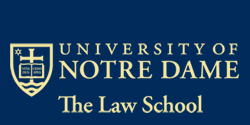The Possibilities and Limits of International Human Rights Law to Foster Social Inclusion and Participation
Document Type
Book Chapter
Publication Date
2017
Abstract
From the Author
In an era in which global norms, institutions, and processes of human rights law have begun to turn their attention to the challenge of social exclusion, it is helpful to ask what role we can reasonably expect human rights systems, particularly in their supranational dimensions, to play in bringing about a more comprehensively inclusive and participatory society. How does the concept of “social exclusion” relate to the idea of human rights and what does a human rights approach to social exclusion have to offer us? What are the possibilities and limitations of supranational human rights mechanisms in addressing and providing remedies for the problems of social exclusion?
In what follows, I will argue that we should not invest high expectations in the capacities of international human rights systems to bring about dramatic social transformations in the direction of inclusive, participatory societies. This is because of inherent, conceptual, and structural limitations in the apparatus of human rights protection, which makes it largely inapt for the goals we are aiming to achieve. However, human rights mechanisms do have an important, even if ultimately limited, part to play in overcoming widespread social exclusion.
The chapter is part of the Proceedings of the 2017 Plenary Session
Towards a Participatory Society: New Roads to Social and Cultural Integration
28 April - 2 May 2017
P. Donati (editor)
Acta 21, Vatican City, 2017
Recommended Citation
Carozza, Paolo G., "The Possibilities and Limits of International Human Rights Law to Foster Social Inclusion and Participation" (2017). Book Chapters. 87.
https://scholarship.law.nd.edu/book_chapters/87


Publication Information
in Towards a Participatory Society: New Roads to Social and Cultural Integration 228 (Pierpalo Donati ed., 2017).